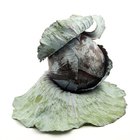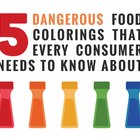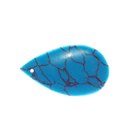
Red food coloring, specifically FD&C Red #3 and #40, are synthetic, petroleum-based additives often used to dress up cake batter and frosting and make them appear more festive. Although these chemical colors have been around for decades, some still question their safety. Fortunately, for those who wish to go all natural, there are viable alternatives available.
The Red Food Coloring Debate
According to Linda Katz, Director of the Office of Cosmetics and Colors at the FDA's Center for Food Safety and Applied Nutrition, color additives are safe if used properly, but there are no absolute guarantees. Additives such as red food coloring are permitted to be sold to consumers if the FDA determines there is "...a reasonable certainty of no harm under the color additive's proposed conditions of use." It's that gray area of "reasonable certainty" that concerns groups like the Center for Science in the Public Interest, which published a report entitled “Food Dyes: A Rainbow of Risks." The report links the use of food coloring to cancer, allergies and hyperactivity in children.
Homemade Alternatives
There are several safe, all-natural alternatives that you can use to add red color to your cake batter or frosting. For rich red color and almost no added flavor, beet juice is the best choice. You can use it straight from the can, or make your own by juicing raw beets. The juice of fresh or frozen elderberries, raspberries, pomegranate or any other edible red fruits is a fine alternative to synthetic red food coloring, although keep in mind that fruit juice will add its own twist of flavor to your recipe.
Market Alternatives
Today's ever-expanding health food market offers a number of safe, all-natural red food colors such as beet powder and vegetable- or plant-based liquid colors. You probably won't find them in conventional supermarkets, so check out local natural food markets, farmers' markets, gourmet specialty stores and health food stores. You can also order all-natural red colors from online natural food sources.
Hidden Origins
Carminic acid is an all-natural ingredient used to add red color to foods, cosmetics and pharmaceuticals. Nutrition labels may list it as carmine, cochineal extract, natural red 4, C.I. 75470, crimson lake or E120, which are all euphemisms for what carminic acid really is: crushed insects. Carminic acid is produced by female cochineal insects and their fertilized eggs to deter predation. In order to extract the colored solution, the insects are boiled, dried, ground into powder, cooked and filtered until there is nothing left but pure carminic acid.
Related Articles
Can I Substitute Beet Juice for Red ...

How to Make Blue Food Coloring

How to Use Beet Root in Baking & ...

What Is Dye Made From?

Difference Between Permanent Hair Color ...

How Often Can You Color Hair Without ...

Bojangles Patio Red Cherry Soda ...

Chi Silk Infusion Ingredients

How to Dye Clothes in the Army's Olive ...

Can You Use Henna Ink As Eyeliner?

The 5 Most Dangerous Food Colorings ...

How Do I Use Rit Dye to Make Turquoise ...

What Is Green Magma?

How to Make Homemade Liquid Rouge

How to Make Grapefruit Seed Extract

What Products Contain Red Phosphorus?

Fiber Sure by Metamucil Ingredients

List of Retinoids

The Manufacturing Process of Cosmetics

What Type of Food Coloring Is Used to ...
References
Resources
Writer Bio
Yvette Sajem has been a professional writer since 1995. Her work includes greeting cards and two children's books. A lifelong animal advocate, she is active in animal rescue and transport, and is particularly partial to senior and special needs animals.
Photo Credits
Comstock Images/Stockbyte/Getty Images